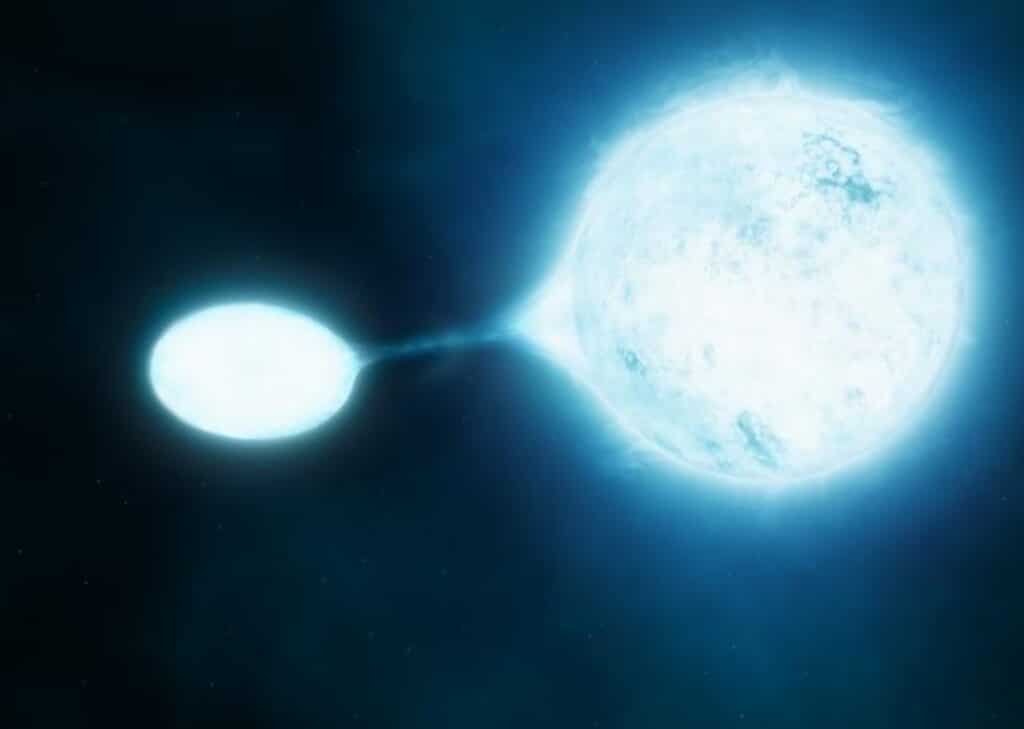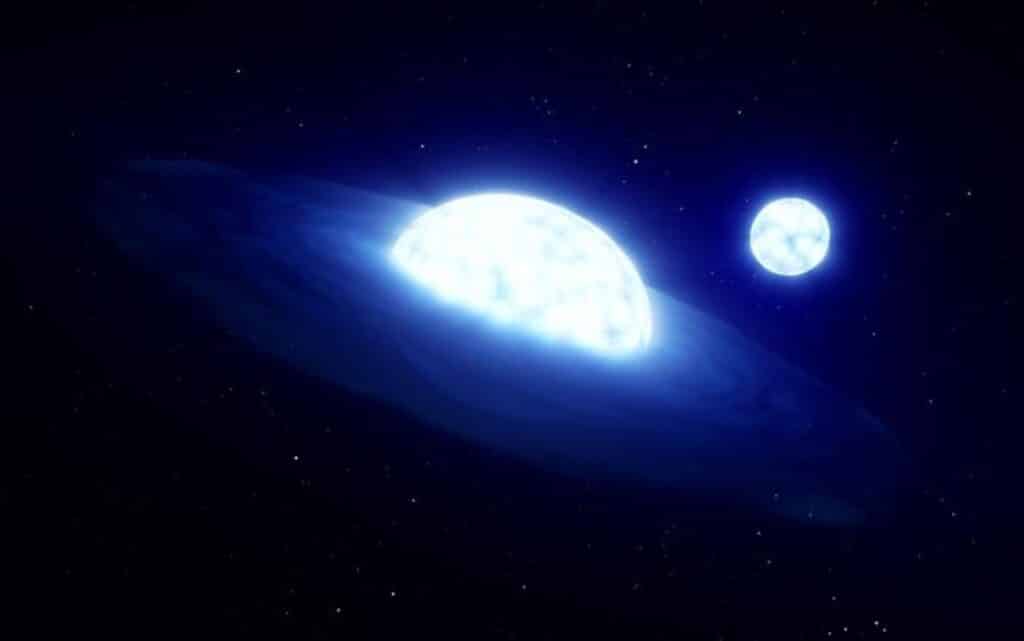Stars will never be looked at the same. Scientists from the University of Leeds have shaken up the world of astronomy by suggesting that massive “Be stars,” previously believed to mainly exist in double star systems, might actually be part of triple star systems. This finding has the potential to revolutionize our understanding of these massive celestial objects, which are considered critical in developing theories about the evolution of stars.
Be stars are a specific subset of B stars and are known for being surrounded by a characteristic gas disk, akin to Saturn’s rings within our own solar system. Despite their presence being documented for roughly 150 years, starting with the work of renowned Italian astronomer Angelo Secchi in 1866, the origin of these gas disks has remained a mystery. Until now, the consensus among astronomers was that the rapid rotation of Be stars, often caused by interactions with another star in a binary system, led to the formation of these disks.
However, University of Leeds astronomers are now suggesting a different scenario. By analyzing data from the European Space Agency’s Gaia satellite, researchers have found evidence indicating that Be stars may actually be part of triple star systems, involving three celestial bodies interacting with each other instead of just two.
“We observed the way the stars move across the night sky, over longer periods like 10 years, and shorter periods of around six months,” says study author Jonathan Dodd, PhD student at the university’s School of Physics and Astronomy, in a university release. “If a star moves in a straight line, we know there’s just one star, but if there is more than one, we will see a slight wobble or, in the best case, a spiral.”
Surprisingly, initial observations seemed to indicate that Be stars had fewer companion stars compared to regular B stars.
“This is interesting because we’d expect them to have a higher rate,” notes Dodd.
“The fact that we do not see them might be because they are now too faint to be detected,” explains study principal investigator René Oudmaijer, professor at the university’s School of Physics and Astronomy.
Researchers then turned their attention to companion stars at larger separations and found that the rate of companion stars was quite similar between B stars and Be stars. This led them to infer that, in many instances, a third star might be involved, causing the companion to move closer to the Be star. This proximity allows for the transfer of mass from one star to the other, ultimately resulting in the formation of the characteristic gas disk around the Be star. This phenomenon could also explain why these companions are no longer detectable, having become too small and faint after being “drained” by the Be star.
The implications of this discovery extend far beyond our understanding of Be stars. It could have a significant impact on various areas of astronomy, including our comprehension of black holes, neutron stars, and sources of gravitational waves.
“There’s a revolution going on in physics at the moment around gravitational waves. We have only been observing these gravitational waves for a few years now, and these have been found to be due to merging black holes,” says Oudmaijer. “We know that these enigmatic objects – black holes and neutron stars – exist, but we don’t know much about the stars that would become them. Our findings provide a clue to understanding these gravitational wave sources.”

Oudmaijer concludes, “Over the last decade or so, astronomers have found that binarity is an incredibly important element in stellar evolution. We are now moving more towards the idea it is even more complex than that and that triple stars need to be considered. Indeed, triples have become the new binaries.”
The study is published in the journal Monthly Notices of the Royal Astronomical Society.













